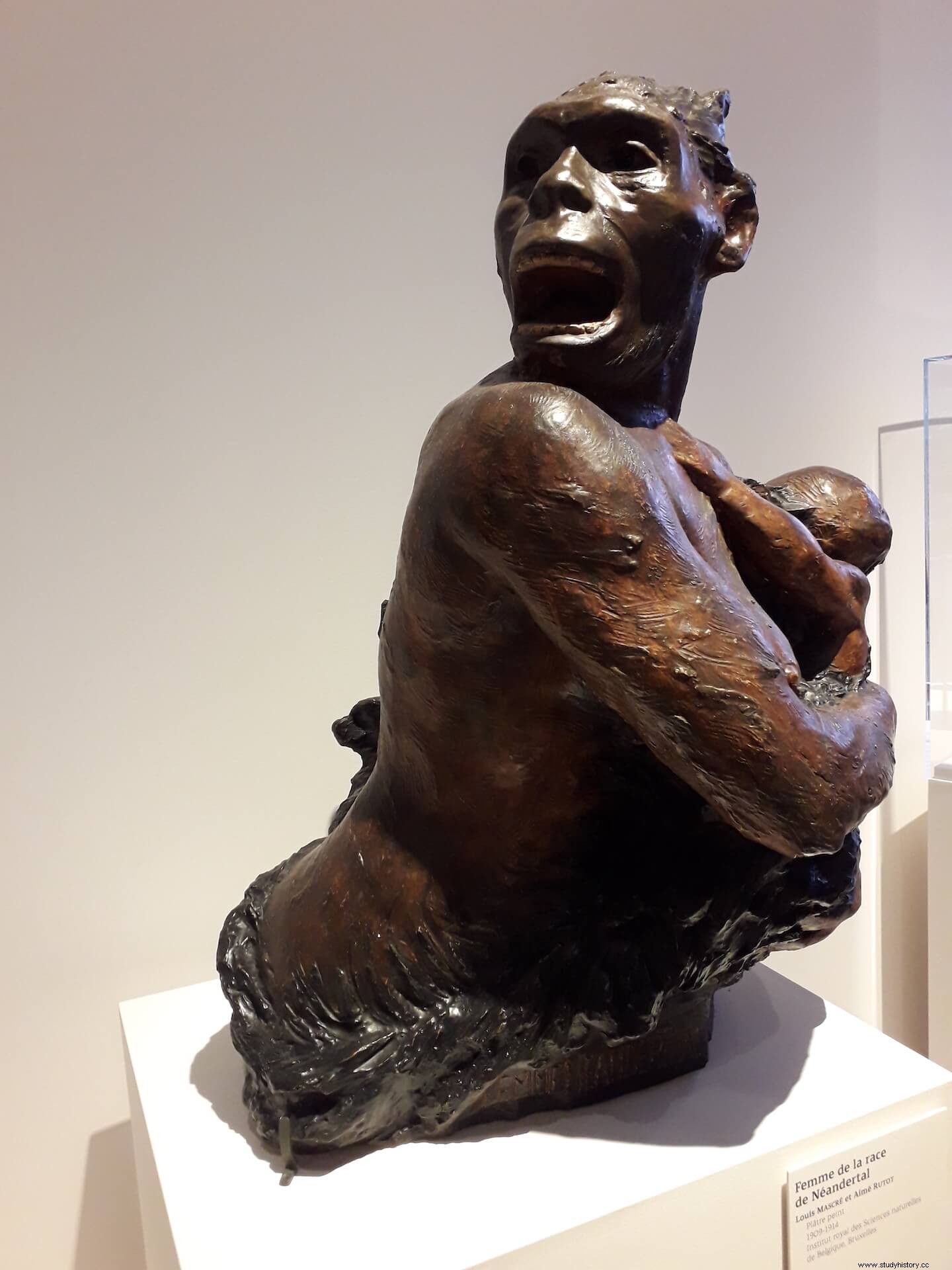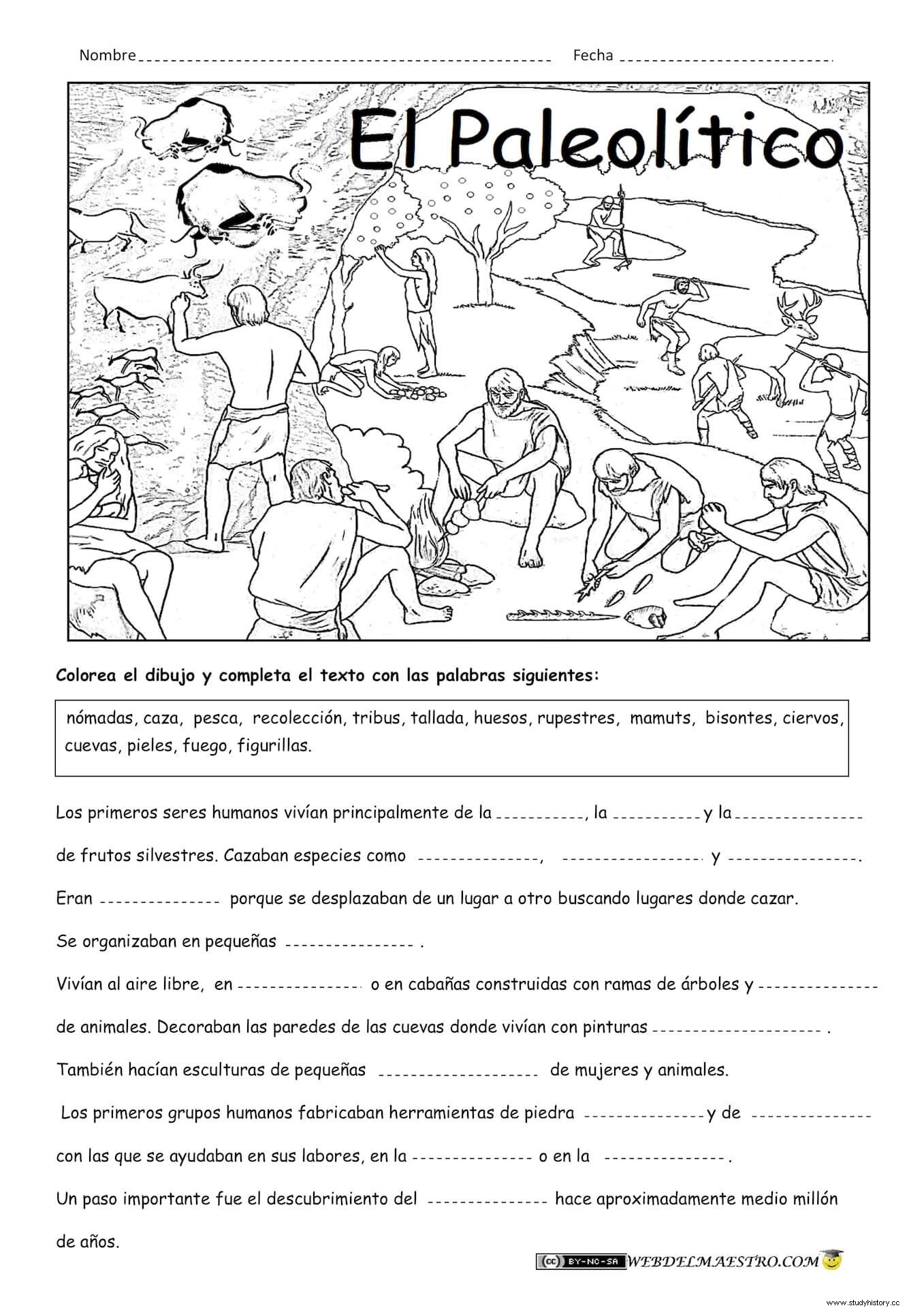
A good example of what was said is that of the evolution of the image of Neanderthals, from aggressive and hunched over apes, to intelligent and social humans. This influenced (and was influenced) in a linear and progressive concept of evolution, with a racist paradigm of evolutionary difference between the different current ethnic groups. Another good example is the representation of women in prehistory . In this case, the biases are difficult to detect because, precisely, they sound very logical to us when transferring to the past behaviors and roles that we conceive as "natural" in the present. Likewise, the public assumes that these representations (and the explanations that accompany them) come from proven knowledge, which is why they fundamentally influence the collective imaginary about the past.
In this way, when the images in museums, textbooks, manuals and explanatory material in the sites have been analyzed, the results have been clear. Although we know very little about gender roles, social roles and forms of organization in prehistory, the images are systematically constructed following the same topics.
Gender roles and women in prehistory
The first prejudice that conditions the graphic apparatus on prehistory is that of the "normativity" of man, considered as the "neutral". Men appear more, with more prominence and in central roles. In fact, in studies such as those by Querol or Gifford-Gonzalez, carried out at different times and in different geographical areas, the proportions were similar. Women were only 10-30% of the characters represented and the scenes in which only men appeared were much more frequent than the opposite. When women appear, moreover, they are usually associated with their “differentiated” role in sexuality and motherhood. The only two female figures chosen by Luis Mascré and Aimé Rutot to be part of the set dedicated to the Institute of Natural Sciences in Brussels, at the beginning of the 20th century, are very significant, a sexualized representation of the Venus of Laussel and a Neanderthal mother, very animalized, with a young. Another good example is that of the images of the evolutionary lines. Systematically, the evolution of "man" is more literal than it might seem.

Women are also depicted kneeling on many more occasions , sitting or in passive attitudes. Likewise, they also appear preferentially within the domestic space, be it the cabin or its surroundings, or a cave. Meanwhile, men appear more often represented actively, standing or carrying out various activities. Even in composition, women appear much more often in the background or as a "background element", while men act more frequently as main elements.
This is given, in part, by the activities associated with each of the genres, without the archaeological record confirming this contemporary assignment in many cases. The most significant example is that of hunting, which is exclusively associated with men and is generally represented in the form of big game. In fact, the image of two men carrying prey, usually a deer hanging from a pole, became a cliché, although very little is attested in the anthropological repertoire. On the other hand, other activities that are attested, such as carrying firewood or water, appear very little and are not normally associated with women. The hunt, in reality, would be mostly small game or medium-sized prey and would involve the entire group, including women and children. In addition, compared to the weight that is usually given in the illustrations, which show the hunters in a heroic way, the food would be sustained, except in the coldest times, much more in the collection or, even, in the scavenging.
The same happens with other activities such as the stone industry or mining, while a paradigmatic image of women is that of the treatment of skins, kneeling on the ground. She is thus associated with the textile industry , considered as something typically feminine for a long time. Likewise, in the case of figures that are not carrying out recognizable activities, they are also mostly women. Nor do they usually appear leading activities or the community. The ritual sphere is also reserved, in images, for the masculine world, especially that of cave painting. It is curious that, in the latter case, recent research suggests that the perpetrators could be, for the most part, women and sub-adults. Hand prints, at least, show us a much more balanced picture than the one museums and interpretation centers let us imagine.
Men are even more absent in care activities. It is practically impossible to find adult men taking care of children, let alone carrying newborns or very young children. The same happens in the case of personal hygiene or gambling. This also leads us to reflect on the resounding absence of children , in general, in the samples, representations and explanations of museums and textbooks, despite its constant presence in societies. Likewise, in very few illustrations they are shown carrying out productive activities, which would be quite normal.
We must bear in mind that this cannot be separated from prejudice that the investigation itself has also had, as in the case of the direct attribution, and without further verification, of grave goods of weapons to male graves and grave goods with jewels to female graves. Cases such as that of the Lady of Baza in which, not without resistance, it was necessary to accept that the buried was a woman, despite the fact that the trousseau had several military panoplies, these prejudices have also been changing.

This is especially important when we think that the continued impact of the images of museums, books, series or advertising, especially affects children, although the whole society tends to "assume" these collective imaginaries. Even so, Girls tend to include women more in the drawings and scenes they make when they are asked to represent prehistoric (or any other) scenes. Fortunately, this story is changing today. An effort is being made to reflect on our own conventions, both in academic literature and in museums or in the creation of images for other educational purposes. The material produced for the exhibition "Women in Prehistory" in Valencia, the new musealization in the archaeological museums of Madrid or Oviedo (although the proportion is still around 20-30% of women nothing more) or the Past Women project , are a good example of these transformations, which can help us create new mental landscapes and "denaturalize" our prejudices.
Bibliography
- Gifford-Gonzalez, D. (1993):“You can hide, but you can’t run:representation of women’s work in illustrations of palaeolithic life”. Visual Anthropology Review 9, p. 3-21.
- Querol Fernández, M. A., (2014) “Museums and Women:inequality in Archaeology”, Arqueoweb:Magazine on Archeology on the Internet , 15 (1), 2014
- Prados Torreira, L. (ed. lit.), López Ruiz, C. (ed. lit.):Archaeological museums and gender:educating in equality , Madrid:Autonomous University of Madrid, Publications Service, 2017. ISBN 978-84-8344-589-1.
- Sánchez Romero, M. (2018):“The (Pre)History of women:a critical review of the discourses of the past”. Andalusia in history , 61, 2018, p. 40-45
- www.pastwomen.net
